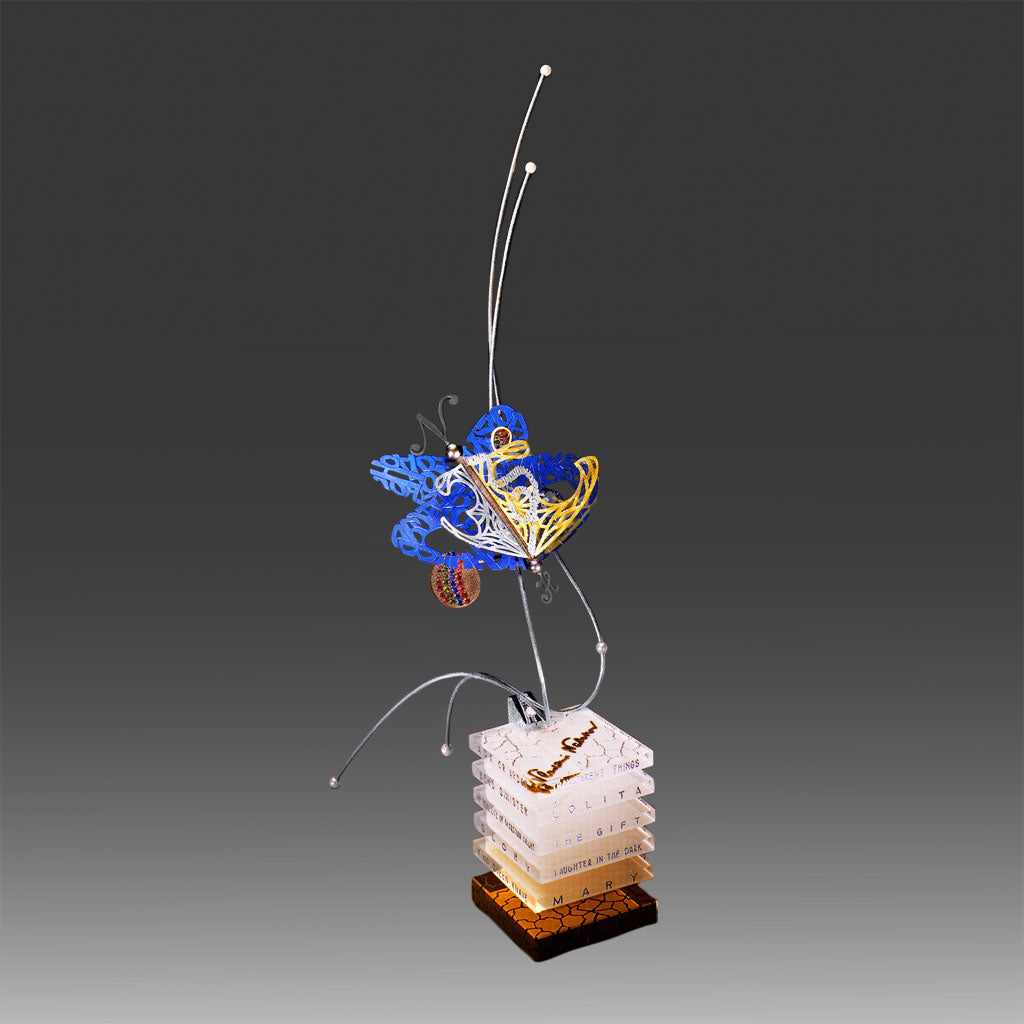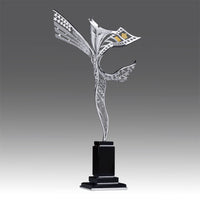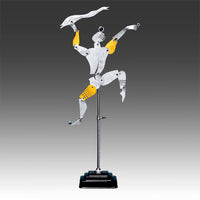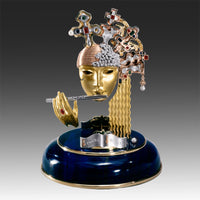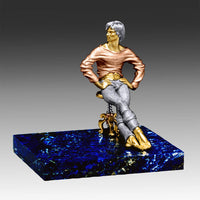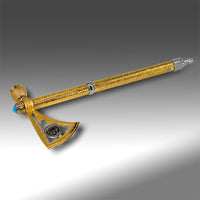The Butterfly is dedicated to the memory of the Russian writer and collector of butterflies, Vladimir Nabokov, and presents a complex integration of symbols, materials, and techniques.
Just like the dual life of Nabokov, The Butterfly consists of two wings inscribed with Russian and English letters. The right wing symbolizes the English part of the writer’s life, and the left—his Russian heritage. A kaleidoscope of color is placed on the Russian wing, signifying the bright and colorful moments from Nabokov’s childhood, up until his departure from Russia. On the English wing, a blue topaz tear symbolizes the hardships that befell the writer thereafter. The two smaller wings are made of gold, with the Russian side in white to represent the silver period of Nabokov’s prose, and the yellow wing on the English side depicts his golden age of his English prose. In the middle flows a lifeline in a spiral-like form, symbolizing Nabokov’s great life struggles and achievements. The optical glass base is inscribed with the titles of Nabokov’s most famous novels.
The renowned Russian poet and writer, Andrey Voznesensky, originally created Nabokov’s Butterfly, as an abstract objet d’art made of cardboard. Voznesensky was a good friend of Jacqueline Kennedy Onassis. When Jacqueline saw the piece at Voznesensky’s exhibition in 1991 at the Sperone Westwater gallery, in New York, she fell in love with it and wanted to buy it. Instead, the poet offered The Butterfly to her as a gift, but asked if he could first display it at an exhibition in Paris and Moscow. When Voznesensky came back to New York to present the butterfly—that Jackie wanted to display in the window of her apartment overlooking Central Park— he only got to witness her funeral. Thus came to life his famous poem dedicated to Jacqueline,
called “Why Did You Turn into a Butterfly?” Height: 300 mm, 11.8 inches.
Handmade in NYC.
